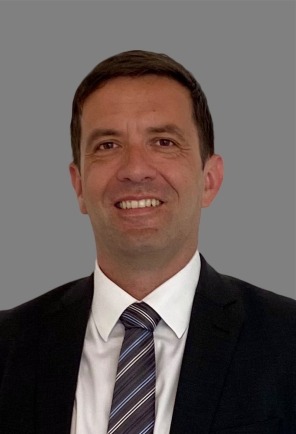Decoding Alan Turing: From Math Genius to Cultural Icon
Everyone is welcome!
Whether you identify as an Ally or a member of the LGBT+ community, A&M’s EMEA LGBT+ employee resource group is an opportunity to connect with colleagues in celebration of diversity and inclusion. The group was founded in 2019 by two employees as a grassroots initiative, and continues today as a vehicle to promote acceptance, both in attitude and in action, and to encourage all employees to proudly be their authentic selves at work. During this year’s LGBT+ history month, we have highlighted a few of the pioneering activists who paved a path for positive change and recognized some of the pivotal historical events instrumental in the campaign for equality.
This week, we shine a light on Alan Turing’s life and legacy, to examine:
• Turing’s pioneering contributions to math and science.
• Turing’s diverse heritage.
• The diverse influences that helped him break the German Enigma code.
• Turing’s pride in his identity at a time of oppressive anti-gay laws.
Decoding Alan Turing: From math genius to cultural icon
Alan Mathison Turing was born in 1912 in Paddington, London.
His remarkable achievements earned the mathematician the status of a modern science hero.

Turing’s life as an openly gay man in Britain during a period when homosexuality was criminalised has also turned him into an LGBT+ icon.
Kayisha Payne, an Associate in A&M's HLS team, wrote the foreword of a 2021 book by Alan Turing's nephew, Dermot Turing: "Reflections on Alan Turing: A Relative Story". Kayisha writes:
“Turing deserves a legacy which is fair and true.
His life embodies one of the struggles of life, resilience and extraordinary scientific achievement. This book reinforces that people are not one dimensional, and neither was Turing.
While he was a homosexual individual whose life was cut short, this should not define his legacy. Moving beyond these stereotypes is crucial to foster and support diversity.”
Pioneering thinking
Turing was always seeking “the physical embodiment of ideas,” according to his nephew Dermot Turing. In 1936, Turing expressed the idea of a universal machine that could decode and perform any set of instructions. This concept embodies the essential principle of modern computers.
In his later life, Turing used mathematical modelling of chemical diffusion to describe how patterns exist and evolve in nature, making significant contributions to the understanding of cell development, or morphogenesis.
Diverse heritage
Turing’s family had several Indian connections:
• Turing’s father, Julius Mathison Turing, was a British member of the Indian Civil Service.
• Turing’s mother, Ethel Sara Turing (nee Stoney) was born and grew up in India, the daughter of the Chief Engineer of the Madras and South Mahratta Railway.
• Alan Turing and his brother John were fostered by a retired army couple in England, as Ethel Turing lived in colonial India for most of the brothers’ childhood.
• Turing’s great-grandfather had been a general in the Bengal Army.
Turing’s family tree also contains a number of scientific influences:
• Florence Stoney, the first woman radiologist in Britain.
• Irish physicist George Johnston Stoney, known for the first definition of natural units of physical quantities.
Collaboration was key to WWII codebreaking
Turing’s work was pivotal in cracking the enigma code used by the German military to encrypt messages. This gave the Allies vital information about Hitler’s forces and ultimately helped change the course of the war. Some historians even credit Turing’s work at Bletchley Park with shortening the war by up to two years.
Yet the collective nature of wartime codebreaking tends to be overlooked. Turing worked with a large and diverse team to create the famous decryption machine “Bombe.”
• Turing claimed that the original idea for the Bombe came from Polish cryptologists. Turing was hugely imaginative and converted that prototype idea into something much more powerful.
• The machine benefitted from significant tweaking by mathematician Gordon Welchman and engineer Harold Keen.
• The participation of women in deciphering the codes at Bletchley Park must also be acknowledged. The team included Turing’s friend Joan Clarke.
An openly gay man, “free, in control of his destiny”¹
Turing’s life is often used to illustrate the historical injustices faced by the LGBT+ community. However, the myth of a victimised, unhappy gay man does not seem to reflect the mathematician’s own approach to homosexuality.
Turing lived an open life despite the repressive laws of his time and had relationships with men throughout his life. During his studies, he found solace in the liberal atmosphere of King’s College, Cambridge. His confidence grew as he enjoyed a relatively permissive environment while working in post-war Manchester, where he worked.
In 1952, Turing was convicted under anti-homosexual laws. Turing handled his trial and conviction in a defiant and stoic manner, and did not think he had done wrong.
Recently uncovered letters and conversation records suggest that Turing was not badly affected mentally after his sentence—on the contrary, he seemed to make light of the conviction.
Untimely death
In 1954, Turing was found dead at his Manchester house at the age of 41. A half-eaten apple was found by his bedside. An inquest ruled the cause of death as suicide by cyanide poisoning. No motive was found, and experts in the mathematician’s life maintain that his death could have equally been an accident.
The Turing Law
Decriminalisation of homosexuality in England and Wales began in 1967.
In 2013, Alan Turing received a royal pardon for his conviction.
In 2017, the “Turing Law” was passed to pardon the thousands of men who were convicted under anti-homosexual laws.²
Legacy
Alan Mathison Turing was ahead of his time, in his attitudes towards homosexuality and his influential thinking, both of which led to contributions that many of us continue to rely on today.
Footnotes
[1] Turing, Dermot. Reflections of Alan Turing: A Relative Story. The History Press, 2021.
[2] https://pages.alvarezandmarsal.com/e/806753/120620-the-turing-test-of-time/844fk/333460242?h=BOCMwYCQihqEsYlX9LjTnT0792AzgtKDo9CtwvYoc-U
An inclusive workplace is integral to success, and while many strides toward equality have been made, progress is an ongoing team sport. Interested colleagues can leverage EMEA’s LGBT+ employee resource group as a forum to meet and connect with members, have cross-collaboration with other employee resource groups, and uplift our LGBT+ colleagues year-round.

